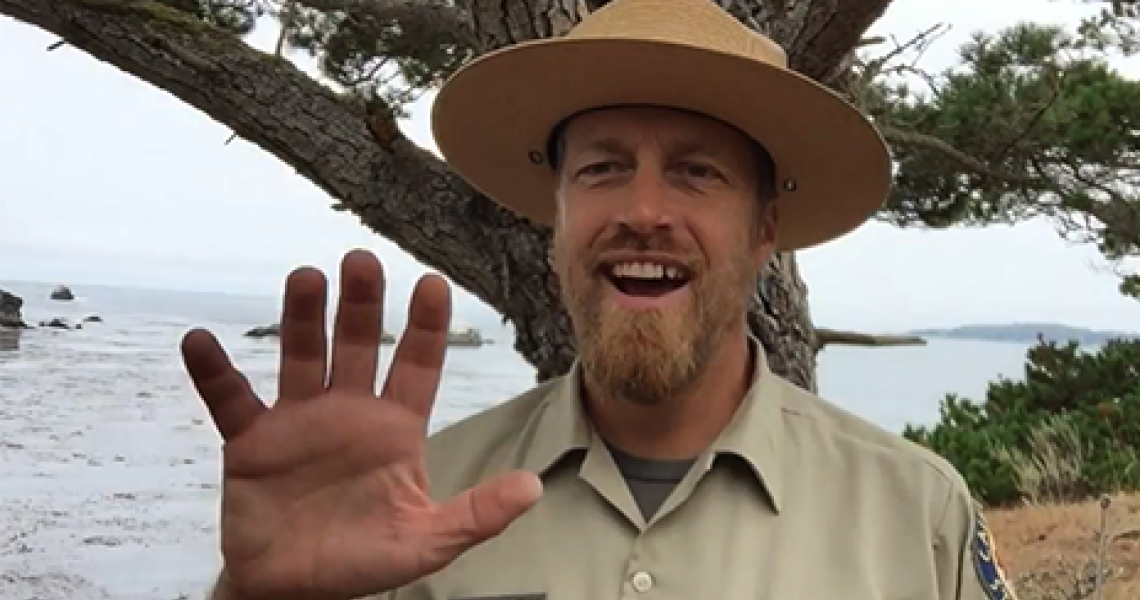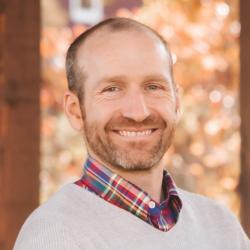
Regardless of whether or not your students have visited one of the more than 430+ parks that dot the country, believe it or not, your students are part owners of these amazing places, and as such will one day have a say in whether or not they continue to enjoy generous public support. Unfortunately, the visitorship doesn’t always reflect the diversity of our country, which is why making your students aware of their national parks by creating opportunities to explore them and develop relationships with them is such an important endeavor. If the “how” is proving difficult, there is good news - your national parks are a great source of support.
National parks across the country routinely create and share different activities and resources that you can use to inspire or augment projects in your classroom. Additionally, opportunities abound for sharing students' work and learning processes beyond the classroom through social media interactions with a park's online presence.
Recently, National Park Week just concluded, and this year’s theme revolved around the sharing of stories. This offers all sorts of opportunities for fostering connections between learners and the park system, so if you are interested in launching a national park themed project, here are some ideas to consider that help put learners, parks, and equity at the forefront;
Elevating Hidden Indigenous Stories
Before a British mariner called it Rainier, it was Taxuma, the sky wiper. Before it was known as the Everglades, it was Pahokee, the river of grass. And long before any of us visited the Yosemite Valley and saw the sheer face of Half Dome, it was known as Ahwanee and the tears that streamed down the face of Tissayack had already filled Mirror Lake. Before our parks were filled with tourists and campers, they were filled with the stories of indigenous people.While much has been done in recent years by both park rangers and indigenous communities to elevate these stories, the average visitor is rarely exposed to them. Therein lies an opportunity for meaningful project work, where students can help lift up otherwise hidden tales about park features told by the original inhabitants.
Projects might include producing collections of stories and histories like those shared by the Mesa Verde Voices podcast, revising how lands are visually interpreted through projects that focus on counter mapping, or learning about how indigenous communities have helped contribute to the fight against climate change in places like Glacier National Park.
Diversifying The National Park Narrative
Without the efforts of everyday people like those you have in your classroom, we wouldn’t have the park system we have today. The efforts of people like John Muir and Theodore Roosevelt are well known, but they are also problematic. While these men were essential to the establishment of parks like Yosemite and Grand Canyon, their stories are pockmarked with racist and imperialist overtones. Absent additional narratives, this can give the mistaken impression that parks are here as a result of the efforts of white Americans alone, overshadowing the truth of the matter that without the efforts of a broad and diverse coalition of everyday people, we would not have many of our most iconic parks;
- Charles Young - an officer in the famed Buffalo Soldier unit of the US Calvary. Young was appointed first superintendent of Sequoia Nat’l Park and worked alongside his men to construct the roads and infrastructure that allowed tourists to first visit the park. John Muir wrote extensively and with great admiration regarding the contributions of Young and the soldiers under his command.
- Masahara Izuka - a Japanese immigrant who moved to Asheville and fell in love with the Great Smoky Mountains. Using nothing more than his camera and personal savings, he led the effort to save huge areas of the future park from clearcutting. He also scouted and marked the entire North Carolina portion of the Appalachian Trail.
- George Melendez Wright - despite being born into one of the most well connected political dynasties in El Salvador, Wright became a naturalist working for the US government. He used his vast inheritance to address the mismanagement of wildlife within our national parks, eventually resulting in the official establishment of the NPS Wildlife Division.
- Marjory Stoneman Douglas - as an editorial columnist for the Miami Herald, Douglas wrote passionately about feminism, social justice, and the need to protect the Everglades from overdevelopment long before any of these causes were popular. Thanks to her writing and organizing efforts, the park was established and its headwaters protected by overdevelopment.
- Lancelot Jones - this son of a former slave refused to sell his land in Biscayne Bay to commercial interests for development despite the vast fortunes offered to him. He instead transferred his lands to the National Park Service (NPS) and spent his remaining days educating visiting school groups about coral, sponges, and sea life.
Looking into the stories of unsung heroes like these not only provides a more accurate picture of the stories of our parks, but also helps recast the environmental movement as not just a “whites only” space. Using stories provides your students with opportunities to explore subjects that resonate with them as they develop research, reading, and writing skills. If you need ideas for how the stories of hidden figures like the ones mentioned above can translate into projects in your classroom, you might consider reviewing projects like Community Heroes or Marking History, Making History in the PBLWorks project gallery.
Exploring Themselves Through the Lens of Parks
Although park lands were initially set aside to preserve and protect wilderness areas or threatened ecosystems, our park system has grown to encompass historic sites, recreation areas, seashores, and battlefields. All together, each park unit comprises a unique “chapter” in the story of our country and its people, a shift reinforced by the diversity of stories reflected in the most recent additions to the park system. Places like Stonewall, Belmont-Paul Women’s Equality National Monument, Amanche, and New Philadelphia were designated as national parks specifically to better reflect the diversity of our nation and missing chapters from its history. These sites provide opportunities for students to find personal connections to their own lives, interests, and heritage.
- The NPS has many published resources that reflect their mission to “tell the stories of all Americans.” For example, these guides focus on experiences of Americans who have been underrepresented in dominant historic narratives.
- Connecting to parks doesn’t have to be relegated to the areas of heritage and history alone. Student interests such as poetry and writing, music, or visual arts, can be powerful vehicles for helping students understand the inspirational power of these special places.
- Students within the LGBTQ+ community may find new and affirming connections between the natural world and their own orientation through queer ecology - the exploration of the non-binary nature of our natural world.
Since the creation of the world’s first national park in 1872, our country has wrestled with one pervasive Driving Question, “what is a national park and what is its value?” Encouraging your students to explore these remarkable places as they search for their own answers can lead to the betterment of not just themselves, but also of the parks they will inherit.

